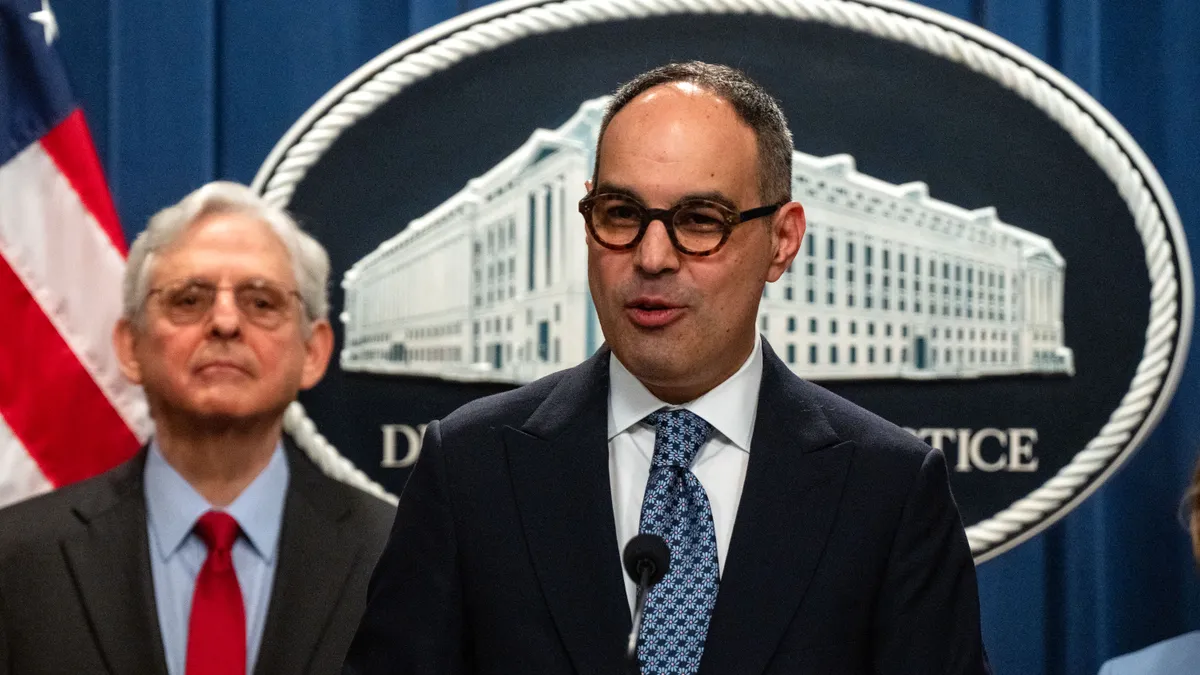Dive Brief:
-
Consumers across the globe increased their use of digital wallets as shopping online rose during the pandemic, according to PayPal and BigCommerce research published on June 23. Before March 2020, digital wallets were a preferred option for just 28.3% of online shoppers globally, but that percentage climbed to 35.2% later in the year, the study said. In-store use rose was even more, from 12.1% to 22.8%.
-
Of 3,000 adult consumers in the U.S., U.K. and Australia surveyed in December 2020, 62.5% are shopping more online and less in-person while 46% of the consumers have used buy-now, pay-later (BNPL) in the prior three months and 8.3% say that it's their current preferred method for shopping online, the research found.
-
“Trying to be everything to everyone is really hard, but we are finding that [consumers] are more likely to shop where they can pay how they want to pay,” Sharon Gee, general manager of omnichannel at BigCommerce, said in an email. “It helps to start with an ecommerce platform that has strong integrations with a wide variety of payment options to make it easy to implement and manage them.”
Dive Insight:
The COVID-19 pandemic has shifted consumers' spending and payments pattern, taking transactions to a digital landscape that includes digital wallets, BNPL and social media commerce, according to the recent research published by digital payments company PayPal and the e-commerce platform BigCommerce.
Although a majority of customers surveyed (95%) had shopped online over the prior year, a "slight majority" across all regions also still prefers in-person shopping, the survey showed. In the U.S., 33% prefer shopping online while 22% prefer shopping in-person. Nearly 33% prefer shopping in-store but say that the benefits of shopping online outweigh the trade-offs and 12% say that shopping online or in-store is the same for them.
Merchants are looking to offer customers multiple payment channels, called omnichannel payments, that are integrated and consistent with user experience.
"Small businesses need to diversify their channel mix and adapt rapidly to this historic shift in consumer behavior toward digital-first," Jacob De Geer, vice president of SMB products at PayPal, said in the research.
Providing omnichannel payments for customers could help with customer retention and also drive sales, Gee said by email. Small merchants with limited resources who are new to online selling face pressure to provide preferred payment methods to their customers, otherwise they could lose sales.
“Larger retailers do tend to provide more options for checkout and payments,” Gee said. “There is plenty of evidence that shoppers like to support smaller businesses, and those businesses need to make it easy for consumers to buy their products by making the checkout process smooth and quick.”
Nearly 58% of the surveyed customers prefer buying online from a large retailer while 31% prefer shopping at their preferred online store and only 9% buy products from local retailers, the study stated.
To meet the hybrid demands of consumer shopping preferences, merchants have pivoted to offering buy online, pick up in-store (BOPIS), also called "click and collect," the report said.
BOPIS usage has nearly tripled as it “provides a safe way to shop by minimizing or eliminating customers’ time spent in store,” the report said. In the U.S., BOPIS use climbed even more and 27% of the retailers in the country now offer that shopping option.
The use of digital wallets for online and in-store purchases has also increased among users across the globe. Before March 2020, 28% preferred paying for online purchases via their digital wallets compared to 35% after March 2020. In the U.S., 17% paid for online purchases via their digital wallets before March 2020 compared to 22% after March 2020.
In-store digital wallet payment adoption has also increased in the U.S., with 13.4% preferring to pay via their digital wallet after March 2020, compared to 6.9% before the pandemic. Despite increasing adoption for in-store digital wallet payments in the U.S., the country still lags behind other developed countries, the research stated.
Consumers are also using more social media as a way to discover new products. Nearly 54% of the surveyed respondents “reported finding new products on social media at least once a month,” while “they’re mainly purchasing through online channels rather than directly in their social feeds,” the report stated.
Social media giants like Facebook, Twitter and Instagram are developing payment rails on their platforms to facilitate e-commerce for businesses, content creators and consumers.
Facebook launched Facebook Shops on Instagram and Facebook last year. “There are now more than 1 million monthly active shops and over 250 million monthly shops and visitors,” Facebook CEO Mark Zuckerberg said during the company’s Q1 2021 earnings call. “We are also focused on building more native commerce tools across our apps…we launched carts on WhatsApp last year, and people have used them to send orders more than 5 million times.”
Twitter is also in the works of developing a shopping option on its platform to facilitate e-commerce sales for its users, according to TechCrunch.
E-commerce is becoming increasingly intertwined with social media, as users see social media platforms as a tool to connect and interact with brands, CB Insights fintech analyst Elif Yayla said in an email.
“Social media platforms that offer the most convenient path to engagement and monetization to content creators will have the upper hand in the race to become the next e-commerce empire," Yayla said.














